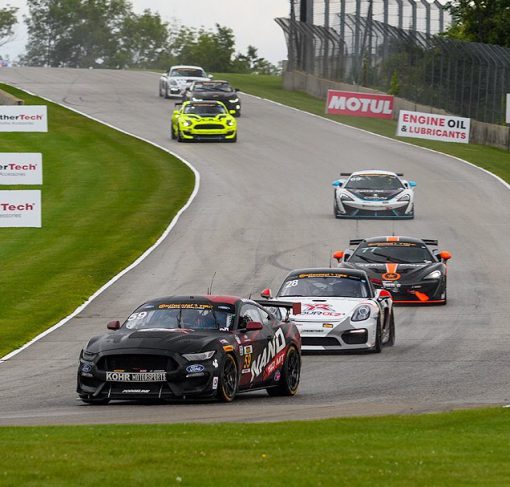Racing in the USA is often associated with oval racing (NASCAR and Indy Car), but this overlooks the fact that the US have both a rich history in road racing and a very active scene on the many great race tracks. There are several governing bodies for road racing, this article aims to give an overview of the main racing series run by them.
IMSA
The International Motor Sports Association is the sanctioning body for the highest levels of closed-wheel road racing in the US. Among the series run by it are:
- The WeatherTech SportsCar Championship, the successor to the American Le Mans and Grand Am series. Cars compete in four classes: Daytona Prototypes (DPi), LMP2, GTLM, and GTD. The 2019 calendar consists of 12 races with the highlights being the 24 Hours of Daytona, the Sebring 12 Hours, and the Petit Le Mans.
- The Michelin Pilot Challenge follows mostly the same calendar with two- to four-hour races. The three race classes are Grand Sport, Touring Car (TCR), and Street Tuner. The Grand Sport class consists of a wide variety of GT4 cars including the McLaren 570, Audi R8, Mercedes-AMG GT, Porsche Cayman GT4, and Ford Mustang.
- The Prototype Challenge consists of six races in 2019 with prototypes (mostly Ligier), powered by Nissan V8 engines.
- Single-make series run by IMSA are the Porsche and Ferrari Challenge and the Lamborghini Super Trofeo.
SCCA
The Sport Car Club of America was established in 1944. It has several divisions, including professional racing, club racing, rallying, and autocross.
Current sanctioned Pro series are:
- The US Formula 4 Championship
- The US Formula 3 Championship
- The Trans-Am series. Created in 1966 for racing Pony cars like the Ford Mustang and 2l imports, the current format consists of four classes. TA1 and TA2 are tube-frame silhouette classes. The Super GT (formerly TA3) class is similar to the GT3 class in other series, whereas the GT (formerly TA4) class is similar to GT4 classes. The 2019 schedule consists of 12 races.
At the club level, the SCCA sanctions are very large number of series at both a regional and a national level, as well as vintage racing and entry-level events. Some of the classes are
- Touring, for production cars
- Super Touring, for improved production cars
- Production, also for improved production cars
- Grand Touring, for purpose-built race cars
- Prototypes in two classes
- Formula cars in various classes
- Spec classes, including the very popular Spec Miata and Spec Racer Ford
- Type classes, American Sedan (e.g. Ford Mustang) and B-Spec for small import cars
NASA
The National Auto Sports Association (not to be confused with the National Aeronautics and Space Administration) is quite similar in focus to the SCCA, sanctioning rallying, autocross, time trials, and club-level racing. Road racing series sanctioned by the NASA are:
- 944 Spec (Porsche 944)
- American Iron Racing (Pony cars)
- Camaro/Mustang Challenge (older Mustangs and Camaros)
- Factory Five Challenge (Cobra-style kit cars)
- German Touring series (German cars, mostly BMW and Porsche)
- Honda Challenge, for various Honda models
- Prototype series
- Performance Touring, a series that accommodates a large number of cars based on power-to-weight ratio
- Spec 3, for the BMW E36 325i
- Spec E30, for the BMW E30 325i
- Spec E46, for the BMW E46 330i
- Spec Miata
- Spec Z, for the Nissan 350Z
- Super Touring, for cars faster than those in the Performance Touring series
- Super Unlimited, for cars that don’t fit into Super Touring
Thanks to the SCCA and NASA, the USA are in the enviable position of having two sanctioning bodies that cater to grassroots motorsports in all its forms. There is a place for practically any car, and a large number of very interesting race tracks, many of them with a rich history. In other words, SCCA and NASA offer something for everyone, whatever your ambitions and budget.

